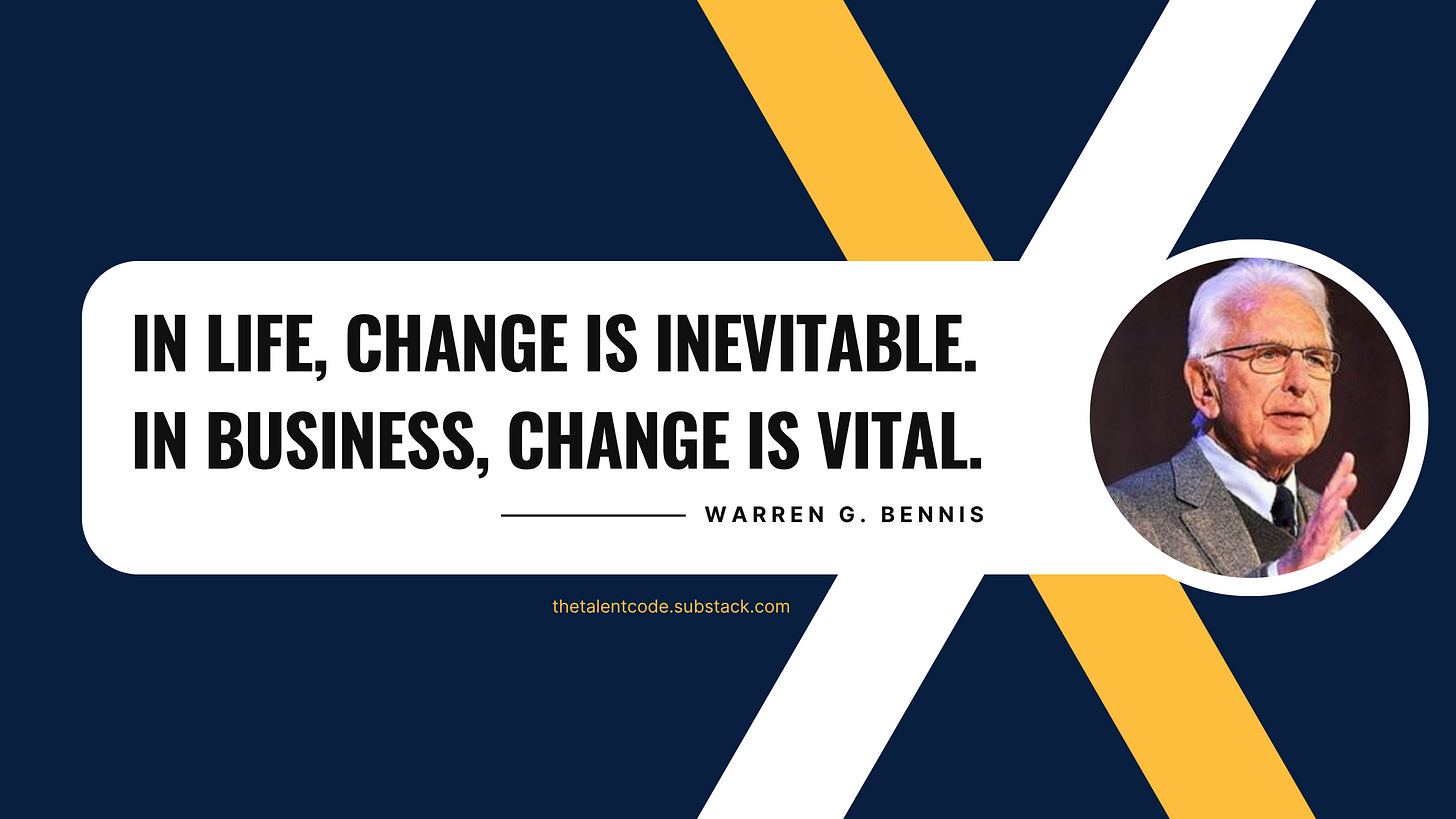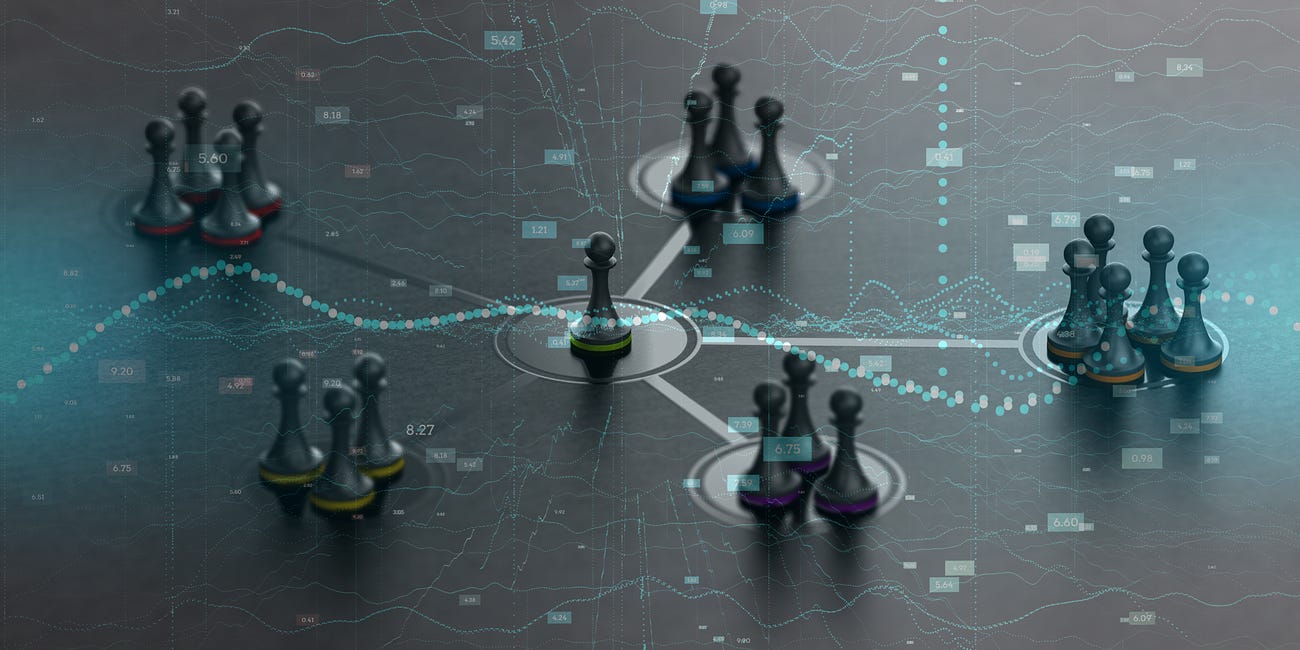Can Your Culture Handle Change?
Is your organization ready for change...or just ready to reject it?
Is your organization ready for change—or just ready to reject it?
It’s a question I’ve had to wrestle with again and again—especially in the Army, an institution that’s been both a pioneer of new tactics and a guardian of tradition for over 250 years. We’re a unique combination of continuous improvement, battlefield innovation, and “We’ve always done it this way.”
The truth is…change doesn’t live in your strategy deck or your org chart. It lives or dies in your culture, even a culture as paradoxical as the Army. Large organizations like ours can house deep pockets of creativity and experimentation while still enforcing rigid cultural norms that choke off new ideas.
Which is why, before you drive change, you need to do an assessment.
Before you introduce a new initiative, a new process, or a bold new idea, you need to ask: Is the culture ready for it? Or is it primed to reject it?
Or are you about to run headlong into a wall of “That’s not how we do things here?”
Let’s talk about how we do that. 🚀
Assessing Your Readiness For Change
Step One: Assess Your Cultural Readiness
Your strategy might be bulletproof. Your data might be solid. Your intent might be clear. But if the cultural wiring of your organization can’t support the change, it will stall—or worse, quietly be rejected and replaced by shadow systems and workarounds.
So how do you assess whether your culture is ready?
Here are five questions to ask yourself (and your team):
1. What happens to new ideas here?
Do people get curious? Defensive? Does the idea get pilot-tested—or parked in a “good idea” folder never to be seen again?
2. Who gets to drive change?
Is it a top-down affair only? Are middle managers empowered? Do frontline innovators have any agency? (not that you can’t drive change from the middle as we talked about last week, but how hard do you want to fight to do that?)
3. What stories do people tell?
Stories are culture in motion. If people talk more about past failures than present experiments, that’s telling. If risk-takers get quietly punished or moved aside, that’s telling too.
4. Where does resistance come from—and why?
Every system resists change somewhere. Understanding whether that resistance is structural (policy), social (power dynamics), or emotional (fear, uncertainty) helps you choose your strategy.
5. What gets rewarded?
This one’s the biggest. Because no matter what you say your values are, people watch what gets rewarded and recognized. If innovation gets lip service but risk-aversion gets promotions, the culture will always default to safety.
Check out this earlier post on how to lead change when you’re not in charge!
Leading From the Middle
A friend of mine recently wrote a great piece about empowering mid-level leaders, and it resonated in a big way. But as I read more closely, I realized he was talking about staff sergeants and squad leaders. And here I was nodding along from my desk in the Pentagon. There are only 331 people in the Army who technically outrank me, but I’m very much in t…
Step Two: Decide Your Approach
After you assess your culture, you’re left with a key strategic choice:
Do I try to shift the culture? Or do I find a way to lead change within it?
Both approaches are valid. But they require very different tactics—and very different time horizons.
Option 1: Change Within the Culture
If you’re in a culture with deeply entrenched norms or leadership that’s skeptical of big shifts (I might be in the middle of one of those), trying to change the culture first may get you sidelined.
Instead, you can:
Find existing narratives that align with your change (e.g., tie your initiative to mission readiness or historical legacy)
Use informal influence—trusted peers, respected mentors, executive champions—to get traction for change
Focus on incremental wins that demonstrate value quickly, building permission for broader change over time
In other words, don’t try to rewrite the entire script. Recast your initiative as a logical next chapter.
This is what I’ve often had to do in the Army. I’ve adapted language, aligned change with legacy systems, and built coalitions at the mid-level to “pre-align” before going up the chain. It’s not flashy, but it’s effective.
Option 2: Change the Culture
Sometimes, though, your initiative requires more than adaptation. You may be facing:
Structural misalignment (e.g., systems that reward the opposite behavior of what you need)
Cultural rot (e.g., widespread disengagement, mistrust, or learned helplessness)
A leadership transition that creates a window for broader transformation
In those cases, you need to go deeper:
Run listening sessions to surface shared frustrations and aspirations
Identify cultural “bright spots” to scale
Tackle symbolic behaviors (e.g., ceremonies, awards, artifacts, meeting norms) that send clear cultural signals
Engage senior champions who can model new behaviors and expectations
Changing culture is slow work. It happens at the pace of trust and identity, not Gantt charts. But sometimes it’s the only way to build a foundation that can support the kind of change your mission demands.
A Sample Organizational Change Readiness Assessment
Here are just a few things you can look at to get you started. I’m going to keep developing this through my research, too.
All should be rated on a scale of 1-5.
SECTION 1: CULTURE & MINDSET
New ideas are welcomed and considered openly in our organization.
(1 = Ideas are dismissed or punished | 5 = Ideas are encouraged and tested)People at all levels feel empowered to lead or influence change.
(1 = Only senior leaders can drive change | 5 = Influence is distributed across roles)We reward innovation, learning, and experimentation, even when it doesn’t succeed.
(1 = Only successful outcomes are rewarded | 5 = Learning is valued over perfection)Change is seen as an opportunity, not a threat.
(1 = Change is feared or avoided | 5 = Change is embraced as part of our identity)
SECTION 2: STRUCTURES & SYSTEMS
Our policies and procedures are regularly reviewed and updated.
(1 = Rarely reviewed or outdated | 5 = Evaluated regularly for relevance and impact)We have effective communication channels for sharing change initiatives.
(1 = Information is siloed or delayed | 5 = Transparent and accessible across teams)Leaders model the behaviors they want others to adopt.
(1 = Inconsistent or symbolic leadership | 5 = Authentic and aligned leadership behaviors)We have clear processes to pilot, scale, and sustain new ways of working.
(1 = No clear path to test and scale | 5 = Proven frameworks and pathways exist)
SECTION 3: CAPACITY & READINESS
Teams have the bandwidth to engage in change activities (e.g., time, resources, support).
(1 = Everyone is overloaded | 5 = Change is built into how we work)We invest in developing change skills—like facilitation, collaboration, and resilience.
(1 = No training or support | 5 = Ongoing learning and skill-building)We proactively identify resistance points and plan to address them.
(1 = Resistance is ignored or feared | 5 = Resistance is expected and managed constructively)We regularly review the impact of changes and adjust based on feedback.
(1 = No post-change review | 5 = Continuous learning and iteration is the norm)
Scoring Guide
45–60: Change-Ready!
Your culture, systems, and teams are primed for transformation. Focus on momentum and scale.30–44: Cautiously Capable
You have some strong foundations, but need targeted investment in communication, process clarity, or leadership modeling.15–29: Change-Resistant
Your culture may be holding back your strategy. Start small, build trust, and focus on cultural rewiring before launching major change.
The Change Paradox in Large Organizations
Here’s the kicker: most organizations live between change readiness and change resistance. They’re not wholly change-friendly. But they’re not completely calcified either. They have pockets of momentum, and pockets of resistance. They have leaders who want transformation and others who fear disruption. They have people who are waiting for permission—and people who are quietly doing the work anyway.
Which means your job, as a change-maker, is to locate the pockets where culture will support you—and expand them. Build coalitions. Tell different stories. Design rituals and systems that reflect the future you want.
Even if you’re not at the top, you can lead from the middle.
Even if the culture isn’t fully ready, you can find a place to start.
And even if the change feels slow, remember: every culture was created by people, and it can be reshaped by people too.
One behavior, one story, one decision at a time.







